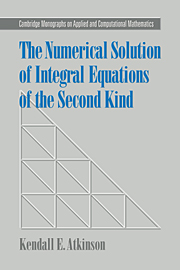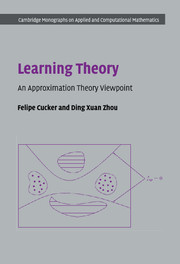Refine search
Actions for selected content:
2584 results in Computational Science
A lower bound for Garsia’s entropy for certain Bernoulli convolutions
- Part of
-
- Journal:
- LMS Journal of Computation and Mathematics / Volume 13 / January 2010
- Published online by Cambridge University Press:
- 01 May 2010, pp. 130-143
-
- Article
-
- You have access
- Export citation
References
-
- Book:
- A Practical Guide to the Invariant Calculus
- Published online:
- 05 June 2012
- Print publication:
- 29 April 2010, pp 241-243
-
- Chapter
- Export citation
4 - Moving frames
-
- Book:
- A Practical Guide to the Invariant Calculus
- Published online:
- 05 June 2012
- Print publication:
- 29 April 2010, pp 114-150
-
- Chapter
- Export citation
Index
-
- Book:
- A Practical Guide to the Invariant Calculus
- Published online:
- 05 June 2012
- Print publication:
- 29 April 2010, pp 244-247
-
- Chapter
- Export citation
7 - Variational problems with symmetry
-
- Book:
- A Practical Guide to the Invariant Calculus
- Published online:
- 05 June 2012
- Print publication:
- 29 April 2010, pp 206-240
-
- Chapter
- Export citation
2 - Calculus on Lie groups
-
- Book:
- A Practical Guide to the Invariant Calculus
- Published online:
- 05 June 2012
- Print publication:
- 29 April 2010, pp 51-72
-
- Chapter
- Export citation
Frontmatter
-
- Book:
- A Practical Guide to the Invariant Calculus
- Published online:
- 05 June 2012
- Print publication:
- 29 April 2010, pp i-iv
-
- Chapter
- Export citation
3 - From Lie group to Lie algebra
-
- Book:
- A Practical Guide to the Invariant Calculus
- Published online:
- 05 June 2012
- Print publication:
- 29 April 2010, pp 73-113
-
- Chapter
- Export citation
Contents
-
- Book:
- A Practical Guide to the Invariant Calculus
- Published online:
- 05 June 2012
- Print publication:
- 29 April 2010, pp v-viii
-
- Chapter
- Export citation
1 - Actions galore
-
- Book:
- A Practical Guide to the Invariant Calculus
- Published online:
- 05 June 2012
- Print publication:
- 29 April 2010, pp 12-50
-
- Chapter
- Export citation
5 - On syzygies and curvature matrices
-
- Book:
- A Practical Guide to the Invariant Calculus
- Published online:
- 05 June 2012
- Print publication:
- 29 April 2010, pp 151-184
-
- Chapter
- Export citation
Preface
-
- Book:
- A Practical Guide to the Invariant Calculus
- Published online:
- 05 June 2012
- Print publication:
- 29 April 2010, pp ix-xii
-
- Chapter
- Export citation
Introduction to invariant and equivariant problems
-
- Book:
- A Practical Guide to the Invariant Calculus
- Published online:
- 05 June 2012
- Print publication:
- 29 April 2010, pp 1-11
-
- Chapter
- Export citation
6 - Invariant ordinary differential equations
-
- Book:
- A Practical Guide to the Invariant Calculus
- Published online:
- 05 June 2012
- Print publication:
- 29 April 2010, pp 185-205
-
- Chapter
- Export citation
Character tables of the maximal parabolic subgroups of the Ree groups 2F4(q2)
- Part of
-
- Journal:
- LMS Journal of Computation and Mathematics / Volume 13 / January 2010
- Published online by Cambridge University Press:
- 01 April 2010, pp. 90-110
-
- Article
-
- You have access
- Export citation
Automorphisms of hyperelliptic modular curves X0(N) in positive characteristic
- Part of
-
- Journal:
- LMS Journal of Computation and Mathematics / Volume 13 / January 2010
- Published online by Cambridge University Press:
- 01 April 2010, pp. 144-163
-
- Article
-
- You have access
- Export citation

The Numerical Solution of Integral Equations of the Second Kind
-
- Published online:
- 27 March 2010
- Print publication:
- 28 June 1997

Learning Theory
- An Approximation Theory Viewpoint
-
- Published online:
- 05 March 2010
- Print publication:
- 29 March 2007
Eigenvalue enclosures and exclosures for non-self-adjoint problems in hydrodynamics
- Part of
-
- Journal:
- LMS Journal of Computation and Mathematics / Volume 13 / January 2010
- Published online by Cambridge University Press:
- 01 March 2010, pp. 65-81
-
- Article
-
- You have access
- Export citation
The character table of a group of shape (2×2.G):2
- Part of
-
- Journal:
- LMS Journal of Computation and Mathematics / Volume 13 / January 2010
- Published online by Cambridge University Press:
- 01 March 2010, pp. 82-89
-
- Article
-
- You have access
- Export citation
 of a modular curve
of a modular curve 